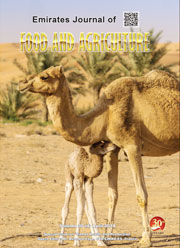IDENTIFICATION AND MOLECULAR CHARACTERIZATION OFTOMATO YELLOW LEAF CURL VIRUS-EG
Keywords:
TYLCV-EG, PCR, DAS-ELISA, Dot-blot hybridization, and Nucleotide sequenceAbstract
Tomato Yellow Leaf Curl virus (TYLCV-Eg) was isolated from whiteflies-infected tomato (Lycopersicon esculentum cv.Castle rock) plants growing in Nubaria and El-Behera Governorate. The infected plants exhibited systemic viral symptoms in the form of sever leaf curling, leaf crinkle with marginal yellowing, stem upright, twisted and stunted. TYLCV-Eg reacted positively with polyclonal antibodies specific to TYLCV using DAS-ELISA. It was transmitted by both syringe injection and whiteflies with transmission efficiency of about 80% and 100%, respectively. TYLCV-Eg isolate was transmitted to different species belonging to families Cucurbitaceae, Fabaceae, Solanaceae and Chenopodiaceae. TYLCV had TIP of 70ºC, DEP of 10-7 and LIV of about 6 days. Electron micrograph of the partially purified TYLCV revealed the presence of monomer and dimmer gemini particles with dimensions of 22 nm and 20 × 30 nm to 24 × 30 nm, respectively when negatively stained with uranyl acetate. Using degenerate oligonucleotide primers, the viral coat protein gene was amplified successfully by PCR, producing ~ 500 bp fragment from tomato infected plants. The viral genome was detected by specific DNA probe using dot blot hybridization technique. Comparative nucleotide sequence analysis showed a similarity of 98% between TYLCV-Eg and other isolates.






 .
. 